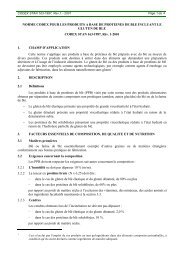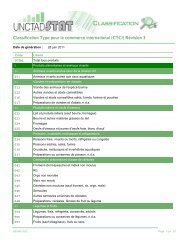issues and constraints related to the development of cashew nuts ...
issues and constraints related to the development of cashew nuts ...
issues and constraints related to the development of cashew nuts ...
You also want an ePaper? Increase the reach of your titles
YUMPU automatically turns print PDFs into web optimized ePapers that Google loves.
9Powdery Mildew Disease (PMD)During <strong>the</strong> dry season (January/February) in West Africa, when <strong>the</strong> surveys <strong>to</strong>ok place, climaticconditions <strong>and</strong> <strong>the</strong> availability <strong>of</strong> suitable young host tissue are both ideal for PMD. Therefore, ifPMD would have been present, <strong>the</strong>n it was <strong>the</strong> time when it would be at its most intense.However, <strong>of</strong> <strong>the</strong> many hundreds <strong>of</strong> trees <strong>and</strong> thous<strong>and</strong>s <strong>of</strong> panicles inspected, PMD was notfound on any <strong>of</strong> <strong>the</strong>m.Somewhat in contradiction <strong>to</strong> <strong>the</strong>se observations, PMD was second on <strong>the</strong> list <strong>of</strong> <strong>the</strong> mostimportant diseases on <strong>cashew</strong> according <strong>to</strong> <strong>the</strong> Plant Protection Department in Guinea Bissau,while Camara <strong>and</strong> Vayssie (1996) list PMD as one <strong>of</strong> <strong>the</strong> principle diseases in Guinea Bissau.For reference PMD is described as follows, for reference: “The most serious biological constraint<strong>to</strong> <strong>cashew</strong> production in East <strong>and</strong> Sou<strong>the</strong>rn Africa is powdery mildew disease, Oidium anacardii,first described by Noack in 1898. It is also found in Brazil, but <strong>the</strong>re it appears <strong>to</strong> attack older,more mature plant tissue while in East Africa it only attacks new, actively growing tissue. In EastAfrica, PMD develops on young growing tissue, e.g. new shoots with tender leaves, paniclesfrom <strong>the</strong> very young <strong>to</strong> <strong>the</strong> mature, apples <strong>and</strong> young <strong>nuts</strong>. Infected parts look as though <strong>the</strong>y arecovered in a white/grey powder. Severely infected young leaves change colour from green <strong>to</strong>brown, become deformed <strong>and</strong> eventually drop <strong>of</strong>f prematurely. Mature older leaves with a welldevelopedcuticle are not attacked. Production can be severely reduced when PMD attacksyoung panicles <strong>and</strong> flowers. Infection can occur even before buds open on young panicles; <strong>of</strong>ten<strong>the</strong> pedicel (stalk <strong>of</strong> an individual flower <strong>of</strong> an inflorescence) is attacked; it becomes necrotic <strong>and</strong>causes <strong>the</strong> flower <strong>to</strong> abscise. Badly infected panicles where buds have abscised appear stunted<strong>and</strong> grey in colour. Infected apples lose <strong>the</strong>ir bright colours, becoming cracked <strong>and</strong> shrivelled as<strong>the</strong>y dry up. Young infected <strong>nuts</strong> may abort; those that manage <strong>to</strong> mature become tarnished <strong>and</strong>dull in colour; nut weight <strong>and</strong> percentage out-turn are both negatively affected”.Conclusions regarding pests <strong>and</strong> diseasesExtensive observations made during <strong>the</strong> survey would suggest that insect pest damage is <strong>of</strong> muchgreater significance than disease problems. Diseases were <strong>of</strong> minor importance, but it should benoted that this might not always be <strong>the</strong> case. As <strong>the</strong> area <strong>of</strong> <strong>cashew</strong> exp<strong>and</strong>s, <strong>the</strong> likelihood <strong>of</strong>major disease problems also increases. It should be remembered that in East Africa up until <strong>the</strong>early <strong>to</strong> mid 1970s, when <strong>cashew</strong> nut production nearly reached 400,000 <strong>to</strong>ns, PMD was notimportant. Now it devastates production throughout <strong>the</strong> region. There is <strong>the</strong>refore always a need<strong>to</strong> be vigilant about diseases in order <strong>to</strong> prevent <strong>the</strong>m getting a firm hold.The issue <strong>of</strong> anthracnose needs fur<strong>the</strong>r clarification.The two Hemiptera sucking pests Helopeltis sp <strong>and</strong> Anoplocnemis curvipes (both sub-orderHeteroptera), <strong>and</strong> thrips, are probably <strong>the</strong> most economically damaging pests over <strong>the</strong> region ingeneral. Trunk borers (Apate terebrans, Coleoptera, family Bostrychidae) <strong>and</strong> branch girdlers(Analeptes trifasciata, Coleoptera, Cerambycidae) can be serious on a more isolated scale.There are also a number <strong>of</strong> minor pests in <strong>the</strong> region as a whole, which could be serioussporadically or from time <strong>to</strong> time (e.g. Aphids, leaf rollers, etc.).There is an urgent need for quantitative data on <strong>the</strong> economic status <strong>of</strong> pests <strong>and</strong> diseases,including:• The distribution <strong>of</strong> pests <strong>and</strong> diseases in each country• The frequency <strong>and</strong> intensity <strong>of</strong> damage caused


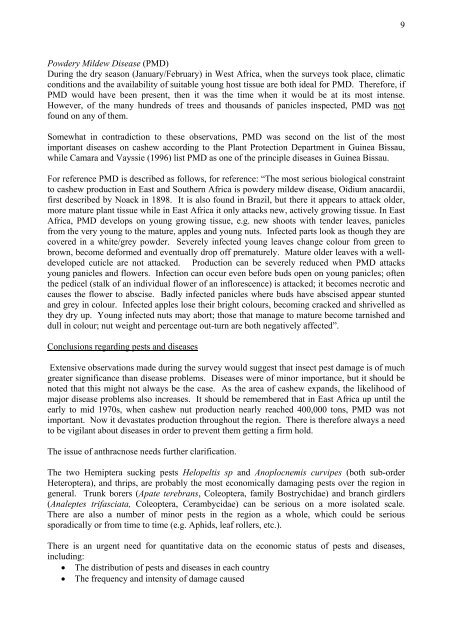
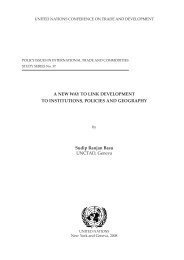



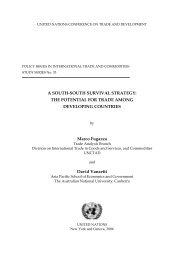
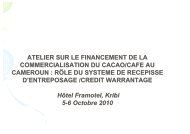
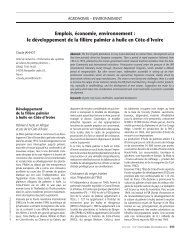
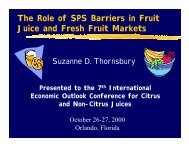

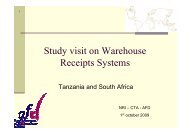
![Warehouse Receipt Systems: Legal Issues [PDF]](https://img.yumpu.com/43979338/1/190x134/warehouse-receipt-systems-legal-issues-pdf.jpg?quality=85)
